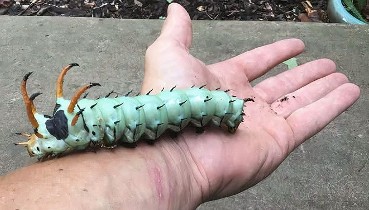

10 Most Beautiful Birds on Planet Earth

The Greater bird-of-paradise
1. Greater Bird-of-Paradise
- Kingdom: Animalia
- Phylum: Chordata
- Class: Aves
- Order: Passeriformes
- Family: Paradisaeidae
- Genus: Paradisaea
- Species: P. apoda
- Conservation status: Least concern
- Binomial name: Paradisaea apoda
The greater bird of paradise is the largest species in the genus Paradusaea. The bird is mainly found in the hill forests and lowlands of southwest New Guinea, Indonesia and Aru Islands.
The size of an adult male bird of paradise measures up to 43 cm (17 in), excluding the long tail wires. The female is bigger than the male, at 48 cm (19 in).
The greater bird of paradise mainly feeds on seeds, fruits and small insects. Their females are often seen foraging along with other species of bird-of-paradise and even other bird species.

Resplendent quetzal
2. Resplendent Quetzal
- Kingdom: Animalia
- Phylum: Chordata
- Class: Aves
- Order: Trogoniformes
- Family: Trogonidae
- Genus: Pharomachrus
- Species: P. mocinno
- Conservation status: Near threatened
- Binomial name: Pharomachrus mocinno
The Resplendent quetzal belongs to Trogon family. It is found from Mexico, Chiapas to western Panama. Quetzal is the national bird of Guatemala, and its image is found on the flag of the country. The country's currency, Guatemalan quetzal, is also named after it.
The size of the species is about 36 to 40 cm (14-16 in) in length, plus up to 65 cm (26 in) of tail in the males. It weighs about 210 g. This bird is a weak flier, so is often the prey of the hawk-eagle, golden eagle, owls and other hawks.
Resplendent quetzal are known as fruit eaters, although they mix their diet with wasps, ants, insects, larvae, lizards and frogs. These birds are well known for their beautiful and colorful plumage.

Formosan magpie
3. Formosan Magpie
- Kingdom: Animalia
- Phylum: Chordata
- Class: Aves
- Order: Passeriformes
- Family: Corvidae
- Genus: Urocissa
- Species: U. caerulea
- Conservation status: Least concern
- Binomial name: Urocissa caerulea
The Taiwan blue formosan is also known as the Formosan blue magpie, the Taiwan magpie or the long-tailed mountain family. This species is endemic to Taiwan, and belongs to the crow family.
Male and female birds share the same plumage. The head, neck and breast are black, eyes are yellow, and the bill and feet are red-colored, whereas the rest of the plumage is almost blue.
Taiwan blue magpies are not afraid of people and are often found near human settlements, in newly cultivated lands or in the mountains. They are usually found in a group of three to twelve birds.
They are scavengers and omnivores, and their diet consists of rodents, insects, snakes, eggs and chicks of other birds, carrion, plants, seeds and fruits. They also feed on food leftovers by humans.

Himalayan monal
4. Himalayan Monal
- Kingdom: Animalia
- Phylum: Chordata
- Class: Aves
- Order: Galliformes
- Family: Phasianidae
- Genus: Lophophorus
- Species: L. impejanus
- Conservation status: Least concern
- Binomial name: Lophophorus impejanus
The Himalayan monal is a pheasant native to Himalayan shrublands and forests found in Pakistan, Afghanistan, Nepal, China, southern Tibet and Bhutan at elevations of 2100-2400 metres. The bird is also known as the Impeyan monal or Impeyan pheasant.
It is a relatively large-sized bird, measuring about 70 cm (28 in) in length. A male adult has a more striking and colorful plumage, whereas a female, like other pheasants, is more subdued in color. A male bird has a long metallic green crest, copper-colored feathers on neck and back, and a prominent white rump, which is mostly visible during bird flight.
Himalayan monals are herbivorous as well as carnivorous. They feed mostly on insects, tubers, seeds, roots and berries.

Oriental dwarf kingfisher
5. Oriental Dwarf Kingfisher
- Kingdom: Animalia
- Phylum: Chordata
- Class: Aves
- Order: Coraciiformes
- Family: Alcedinidae
- Genus: Ceyx
- Species: C. erithaca
- Conservation status: Least concern
- Binomial name: Ceyx erithaca
The Oriental dwarf kingfisher is a pocket-sized bird, and is also known as black-backed kingfisher or three-toed kingfisher. It is a partial migrant bird that is endemic across Southeast Asia and Indian Subcontinent.
It is one of the smallest known kingfisher species. It measures up to 12.5-14 cm in length, including bill and tail, and is only slightly larger than a medium-sized hummingbird.
It typically inhabits lowland forests, near ponds or streams where it can feed on insects, worms, spiders, crabs, frogs, lizards and fishes. Oriental dwarf kingfisher is easily distinguishable from other birds of its family due to its red bill, lilac-rufus upperparts, yellow-orange underparts and blue-black back.

Scarlet macaw
6. Scarlet Macaw
- Kingdom: Animalia
- Phylum: Chordata
- Class: Aves
- Order: Psittaciformes
- Family: Psittacidae
- Genus: Ara
- Species: A. macao
- Conservation status: Least concern
- Binomial name: Ara macao
The scarlet macaw is a member of a large group of Neotropical parrots known as macaws. It is a large Central and South American parrot with mainly a red, yellow and blue plumage. This bird is native to humid evergreen forests of tropical South and Central America.
The length of an adult bird is about 81 cm (32 in), of which more than half is the pointed tail which is typical of all macaws, but the scarlet macaw has a bigger tail than the other large macaws.
These birds make very high, loud and sometimes low-pitched, throaty squawks, screams and squeaks to call for their groups even many miles away. The typical lifespan of the scarlet macaw is 40 to 50 years, but in captivity they can live up to 75 or even 90 years.
They are mostly seen eating bugs, snails and foliage, but they love to eat insects and larvae. They also add flowers and nectar to their diet as supplemental food.

Golden pheasant
7. Golden Pheasant
- Kingdom: Animalia
- Phylum: Chordata
- Class: Aves
- Order: Galliformes
- Family: Phasianidae
- Genus: Chrysolophus
- Species: C. pictus
- Conservation status: Least concern
- Binomial name: Chrysolophus pictus
The Golden pheasant is a bird native to the forests and hilly areas of western China, but is also found in many countries like Canada, the United States, the United Kingdom, Mexico, Peru, Columbia, Bolivia, Argentina, Chile, Uruguay, Germany, the Falkland Islands, Belgium, France, the Netherlands, Ireland, France, New Zealand and Australia.
The size of an adult male is 90-105 cm (35-41 in) in length, with its tail accounting for two-thirds of total body length. The male has a bright, colorful appearance with a golden crest and rump and bright red body.
On the other hand, female pheasant is less showy, with a duller mottled brown plumage. She is smaller than male, with a proportionately shorter tail, which is half her 60–80 cm (24–31 in) length.
They mostly feed on the ground and roost on trees at night. Their food consists of leaves, grain and insects etc. In winters, they forage nearby human settlements, taking seeds and wheat leaves.

Victoria crowned pigeon
8. Victoria Crowned Pigeon
- Kingdom: Animalia
- Phylum: Chordata
- Class: Aves
- Order: Columbiformes
- Family: Columbidae
- Genus: Goura
- Species: G. victoria
- Conservation status: Near threatened
- Binomial name: Goura victoria
The Victoria crowned pigeon is a big, bluish-grey pigeon with an elegant plumage. This bird has red irises, maroon breasts and a blue lace-like crest. This bird is native to the New Guinea region.
The bird can easily be recognized by the unique white tips on its crest, giving the appearance of the beautiful crown on its head. They usually travel in pairs or flocks when search for food.
They are fond of eating figs, but their food typically consists of fallen fruits. Furthermore, they occasionally eat seeds and invertebrates as food supplements. In the wild, these birds are shier than the western crowned pigeon, but on occasions, can be approached quietly.

Toco toucan
9. Toco Toucan
- Kingdom: Animalia
- Phylum: Chordata
- Class: Aves
- Order: Piciformes
- Family: Ramphastidae
- Genus: Ramphastos
- Species: R. toco
- Conservation status: Least concern
- Binomial name: Ramphastos toco
The Toco toucan is the largest and most popular species of the toucan family, which is also known as the common toucan or giant toucan. This bird is an inhabitant of semi-open habitats of central and eastern South America. The Toco toucan is a common attraction in zoos.
It has a striking and beautiful plumage, with mainly black body, a white throat and chest, white upper tail-coverts, whereas red under tail-coverts. A thin layer of blue skin around the eyes gives an appearance of blue iris, which is typically seen in small groups or pairs.
The Toco toucan mostly feeds on fruits, but also frogs, insects, small reptiles, small birds and their eggs. Its long bill is used to reach things that otherwise would be unapproachable. These birds are very protective of themselves and their young ones.

Nicobar pigeon
10. Nicobar Pigeon
- Kingdom: Animalia
- Phylum: Chordata
- Class: Aves
- Order: Columbiformes
- Family: Columbidae
- Genus: Caloenas
- Species: C. nicobarica
- Conservation status: Near threatened
- Binomial name: Caloenas nicobarica
The Nicobar pigeon is an inhabitant of small islands and coastal regions of Andaman, the Nicobar Islands, India, Malay Archipelago, Palau and the Solomon Islands.
It is a big size pigeon, measuring up to 40 cm (16 in) in length. It has a grey colored head, like the plumage of the upper head, which turns into striking copper and green-colored hackles. The tail is pure white and very short.
These birds roam from island to island, in the form of flocks. They spend their day in areas with better food availability, even in human-inhabited areas, whereas for sleeping they go to offshore islets where no predators are found. They are attracted to areas where grain is available. Their food primarily consists of fruits, buds and seeds.
Recommended Videos
 “Thanks Nature Cafe” Is A Sheep Cafe In South Korea That Shares Adorable Photos Of Sheep Getting Washed18 views
“Thanks Nature Cafe” Is A Sheep Cafe In South Korea That Shares Adorable Photos Of Sheep Getting Washed18 views The Giant Chinese Dobson Fly (Acanthacorydalis fruhstorferi)92 views
The Giant Chinese Dobson Fly (Acanthacorydalis fruhstorferi)92 views-
Advertisements
 The long-tailed broadbill (Psarisomus dalhousiae)347 views
The long-tailed broadbill (Psarisomus dalhousiae)347 views 45 Funny Workout Memes Providing Calorie Burning Laughter This Week105 views
45 Funny Workout Memes Providing Calorie Burning Laughter This Week105 views Man Spots ‘Dead’ Sea Turtle Trapped On Land And Brings Her Back To Life107 views
Man Spots ‘Dead’ Sea Turtle Trapped On Land And Brings Her Back To Life107 views 174 Times People Spotted Nightmarish Things In Nature437 views
174 Times People Spotted Nightmarish Things In Nature437 views Bread Whisker: The Adorable Little Bird That Appears To Have Two Large Whiskers Near Its Eyes51 views
Bread Whisker: The Adorable Little Bird That Appears To Have Two Large Whiskers Near Its Eyes51 views Mirny Mine and its 525-meter-deep Gap127 views
Mirny Mine and its 525-meter-deep Gap127 views



